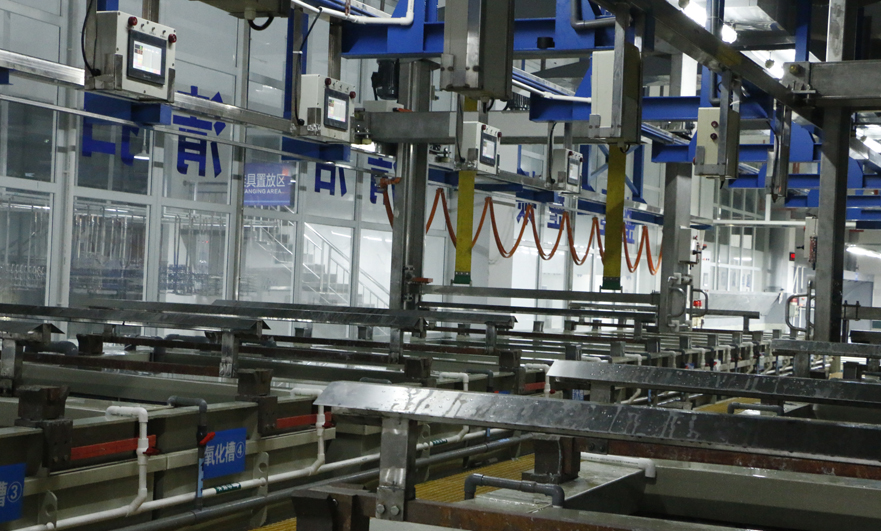15 years one-stop China custom CNC machining parts factory

Hey there I’m VMT Sam!
With 25 years of CNC machining experience we are committed to helping clients overcome 10000 complex part-processing challenges all to contribute to a better life through intelligent manufacturing. Contact us now
 158 |
Published by VMT at Nov 17 2021
158 |
Published by VMT at Nov 17 2021
Stainless steel is the most common metal material, with unique strength, high wear resistance, superior anti-corrosion performance and not easy to rust. It is widely used in environmental protection industry, chemical industry, electromechanical industry, home appliance industry, etc. However, in daily life, due to the different surface treatments of stainless steel processed parts, there will always be great differences in vision. What kind of surface treatment is suitable for stainless steel processing parts? If you are interested in the surface treatment of stainless steel machining parts, then read on.
What are the common surface treatment types of stainless steel processing parts?
1. Surface mirror bright treatment: Due to the different requirements and complexity of customers, the surface treatment we choose is also different. Specifically, it can be divided into mechanical polishing, electrochemical polishing, and chemical polishing to meet different mirror effects.
a. Mechanical polishing: suitable for processing simple stainless steel parts and small and medium-sized products.
Advantages: After CNC machining, the flatness and brightness of stainless steel parts are greatly improved.
Disadvantages: increased labor costs, not environmentally friendly enough, complicated parts cannot be processed, and the gloss of stainless steel processed parts cannot be maintained for a long time, prone to inconsistent gloss.
b. Electrochemical polishing: suitable for the surface treatment of mass-produced stainless steel processing parts, products with tolerances, and high-end products.
Advantages: long light retention time, good environmental performance, stable process, low cost, and good anti-corrosion performance.
Disadvantages: poor gloss, gas overflow, need to add ventilation equipment, difficult to heat up.
C. Chemical polishing: suitable for small batches of complex parts and stainless steel processing parts with low gloss requirements.
Advantages: low cost of CNC machining equipment, high polishing efficiency, good anti-corrosion performance, and short CNC machining time.
Disadvantages: poor gloss, gas overflow, need to add ventilation equipment, difficult to heat up.

2. The surface natural color whitening treatment material is processed by numerical control processing through coiling, edging, welding or artificial surface fire roasting and heating treatment to produce black oxide skin. This hard gray-black oxide skin is mainly composed of two EO4 components, NiCr2O4 and NiF. In the past, hydrofluoric acid and nitric acid were generally used for strong corrosion. However, this method is expensive, pollutes the environment, harmful to the human body, and corrosive, and has been gradually eliminated.
At present, most of the natural whitening treatments mainly use oxidized skin treatment methods, and there are mainly the following two:
a. Sand blasting (shot blasting) method: mainly use the method of spraying tiny glass beads to remove the black oxide scale on the surface.
b. Chemical treatment methods: use environmentally friendly chemical methods to clean and wash to achieve the purpose of whitening the natural color of stainless steel processing parts.
3. Surface coloring treatment: In order to give stainless steel various colors, effectively improve the wear resistance and corrosion resistance of stainless steel processing parts.
a. Electrochemical coloring method: the color of the film formed in a specific solution by electrochemical oxidation.
b. Chemical oxidation coloring method: the color of the film formed by chemical oxidation in a specific solution. There are dichromate method, mixed sodium salt method, vulcanization method, acid oxidation method and alkali oxidation method. A common method is "Inco" (INCO).
C. Ion deposition oxide coloring chemical method: Put the stainless steel processing parts in a vacuum coating machine for vacuum evaporation plating.
d. High-temperature oxidation coloring method: the stainless steel processing parts are immersed in a specific molten salt, and certain process parameters are maintained, so that the workpiece forms a certain thickness of oxide film and presents a variety of different colors.
e. Gas-phase pyrolysis coloring method: more complicated and less industrially used.
In addition, it can also be used for surface treatment options of stainless steel machined parts, such as matte, oil mill and wire drawing, wire drawing film, 8K sanding, short stitching, embossing, black titanium, color titanium, rose gold and other stainless steel machined parts.
Summarize
Stainless steel is a common material in our lives. Due to the different application scenarios and performance of stainless steel machining parts, different surface treatment methods are selected.
Ready To Start Your Next Project?
Get Instant Quote

Request a Free Quote
Send us a message if you have any questions or request a quote. We will get back to you ASAP!